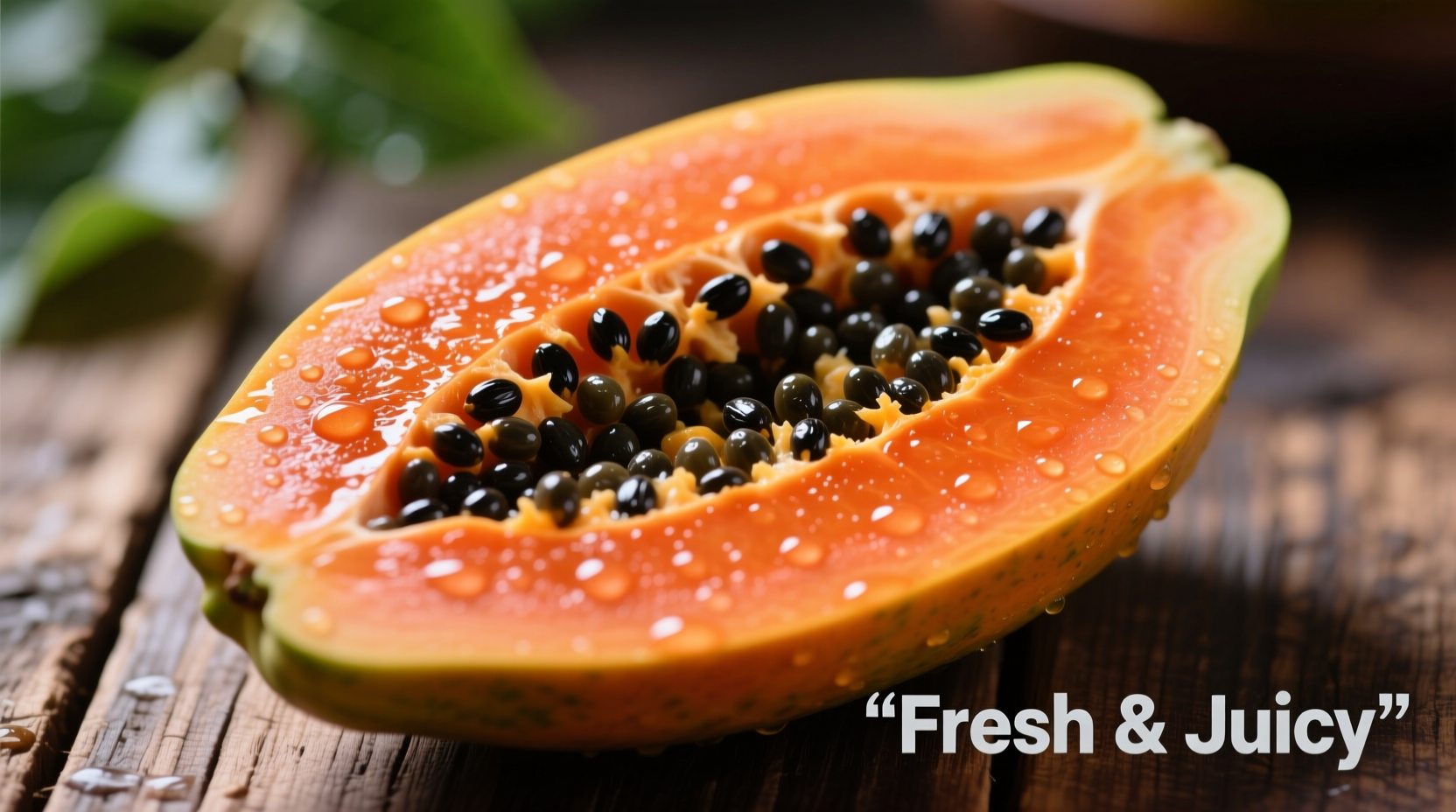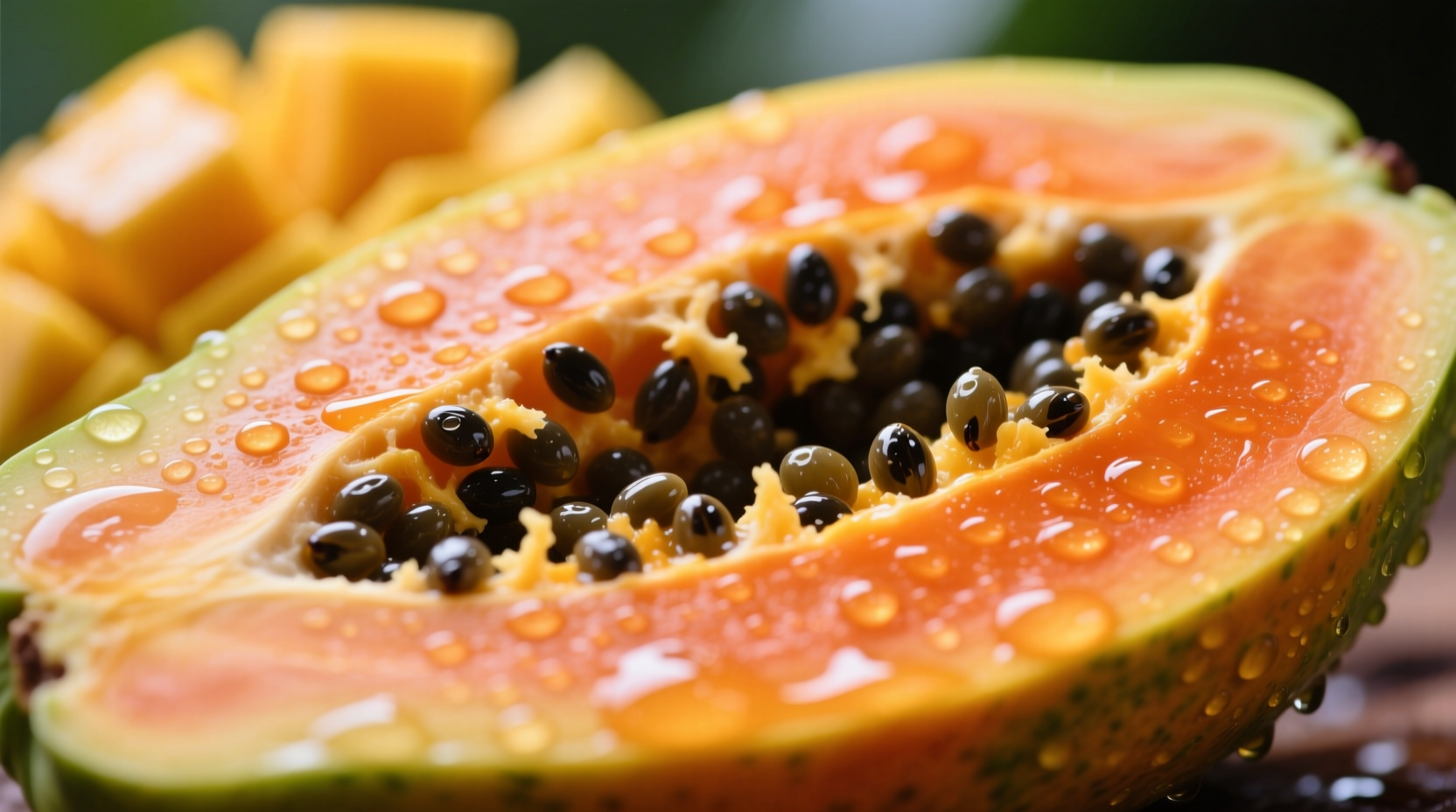Your Complete Guide to Papaya's Flavor Profile
Ever wondered what papaya tastes like? Whether you're encountering this vibrant fruit for the first time at your local market or planning to incorporate it into your recipes, understanding its distinctive flavor can transform your culinary experience. This comprehensive guide breaks down exactly what to expect from papaya at different ripeness stages, how it compares to familiar fruits, and why its taste varies across varieties and growing conditions.
First Bite: What to Expect When You Taste Papaya
When you slice into a perfectly ripe papaya, your first impression will be a burst of tropical sweetness balanced by subtle floral notes. The flesh delivers a juicy, buttery texture that melts in your mouth, with flavor notes that most accurately resemble a cross between cantaloupe and mango. Unlike mango's intense sweetness, papaya offers a more delicate sweetness with surprising complexity—think honeydew's mildness elevated with tropical sophistication.
Many first-time papaya eaters report detecting faint berry-like undertones, particularly in the center near the seeds. The flavor profile changes dramatically based on ripeness:
- Fully ripe papaya (orange-red flesh): Sweet with honey-like notes and tropical fruit complexity
- Moderately ripe (yellow-orange): Balanced sweet-tart profile with subtle peppery hints
- Unripe/green (firm white flesh): Neutral, slightly vegetal with mild peppery notes—ideal for savory cooking
| Ripeness Stage | Flavor Profile | Best Culinary Uses |
|---|---|---|
| Green/Unripe | Neutral, slightly peppery | Salads, curries, pickles |
| Yellowing | Mild sweetness with tart notes | Smoothies, salsas |
| Orange/Ripe | Sweet cantaloupe-mango fusion | Eaten raw, desserts, breakfast bowls |
| Deep Red/Overripe | Intensely sweet with fermented notes | Smoothies, sauces (use immediately) |
Why Papaya's Taste Varies: Key Influencing Factors
Papaya's flavor isn't consistent across all varieties or growing conditions. Understanding these variables helps set accurate expectations:
Varietal Differences
The Hawaiian Yellow variety delivers consistent sweetness with minimal muskiness, while Mexican Maradol papayas offer bolder, more complex flavors with pronounced berry notes. According to USDA agricultural research, papaya varieties grown in volcanic soil regions like Hawaii develop more pronounced tropical notes compared to those grown in mainland climates.
Ripeness Science
As papayas ripen, enzymatic changes transform their flavor profile. The enzyme papain breaks down compounds during ripening, converting neutral-tasting precursors into aromatic compounds responsible for the characteristic tropical flavor. Research from the University of Florida's Tropical Research Center confirms that optimal ripeness occurs when the flesh reaches 11-13° Brix (sugar measurement), delivering the perfect sweet-tart balance.
Geographical Impact
Papayas grown in tropical regions with consistent rainfall develop more complex flavor profiles than those grown in arid conditions. A 2023 study published in the Journal of Food Science analyzed papayas from 12 growing regions and found Caribbean-grown specimens had significantly higher concentrations of flavor-enhancing esters compared to those grown in subtropical zones.

Texture and Aroma: Completing the Sensory Experience
Beyond taste, papaya offers a distinctive sensory experience. The texture ranges from firm and slightly crunchy in unripe fruit to luxuriously buttery when perfectly ripe. Unlike mango's fibrous texture, papaya's flesh is remarkably smooth with a melt-in-your-mouth quality.
The aroma provides important flavor cues—ripe papaya emits a delicate floral fragrance with tropical undertones, while overripe specimens develop fermented notes. Food scientists at Cornell University have identified linalool and geraniol as the primary aroma compounds responsible for papaya's characteristic scent profile.
Common Flavor Comparisons: What Papaya Actually Tastes Like
When describing papaya's taste, many compare it to other fruits, but these comparisons require nuance:
- Cantaloupe: Similar melon-like sweetness but with more tropical complexity
- Mango: Shares tropical notes but lacks mango's intense resinous quality
- Peach: Comparable juiciness but without stone fruit's floral intensity
- Strawberry-banana: Only in overripe specimens with fermented notes
Professional flavor tasters consistently describe ripe papaya as having a "honeyed cantaloupe base with subtle mango undertones and a whisper of berry freshness." The center near the seeds often delivers the most complex flavor experience with slightly more pronounced berry notes.
Maximizing Papaya Flavor: Pro Tips
Enhance your papaya experience with these science-backed techniques:
- Ripening control: Store at room temperature until yellow patches appear, then refrigerate to slow ripening
- Flavor pairing: Complement with lime juice to enhance tropical notes or mint for refreshing contrast
- Texture preservation: Add acidic components like citrus after cutting to maintain firmness
- Seed utilization: Don't discard seeds—they offer a peppery kick perfect for salad dressings
Food chemistry research shows that adding a squeeze of citrus not only enhances flavor perception but also slows enzymatic browning, preserving both appearance and taste for up to 24 hours when properly stored.
When Papaya Tastes 'Off': Identifying Problems
Occasionally papaya might deliver unexpected flavors. Understanding these variations helps distinguish normal characteristics from actual problems:
- Mild bitterness: Normal in near-ripe fruit, disappears as ripening completes
- Excessive latex: White sap indicates under-ripeness—rinse thoroughly before eating
- Fermented taste: Indicates overripeness but remains safe if no mold present
- Soapy flavor: Rare genetic variation affecting some consumers' perception
According to FDA food safety guidelines, papaya should be discarded if exhibiting sour odors, slimy texture, or visible mold—signs of spoilage rather than normal flavor variation.











 浙公网安备
33010002000092号
浙公网安备
33010002000092号 浙B2-20120091-4
浙B2-20120091-4